Featured image: There are many adventures to be found in Oslo in the winter months | Photo by Madrugada Verde on Shutterstock
Embracing adventure in Oslo in the winter
by Carolyn Ray
It’s a blustery December morning in Oslo Harbour as I board the SS Helena, an authentic Norwegian three-masted wooden ship, on a Fjord cruise with Båtservice Sightseeing. We passengers huddle together as we dip in and out around the small islands in Oslo harbour, past colourful summer huts painted in shades of green, yellow and red. The SS Helena offers a covered space, so I snuggle under heaters and a blanket to stay warm while sipping a hot chocolate and enjoying the narration from the guide.
This is my second visit to Oslo in the winter, and I’ve noticed a few things about Norwegians. First, it’s a country that celebrates risk-takers, perseverance and adventurers. Consider Norwegian Roald Amundsen, who was the first to cross the Northwest Passage on the Gjøa and was the first person to reach the South Pole in 1911, a feat that is even more astonishing when you walk on the wooden deck of the Fram.
Then there’s skiing, a sport that I never quite got the hang of. It’s well known that Scandinavia’s Indigenous people, the Sami, invented skiing for hunting. Today, the 5,000+-year-old wooden skis in Oslo’s Holmenkollen Ski Museum are a point of pride for the Norwegians, who seem to have been born with skis on their feet. In fact, the world’s first big ski-jumping event occurred at Christiania (now Oslo) in 1879. More recently, in 2024, Norwegian skier Anders Backe recaptured the Guinness World Record for the fastest speed downhill skiing backward, at 82.9 mph on a ski slope. (Yes, backwards).
The other thing I learned is that Norwegians do not take the sun for granted. In the winter, there are only a few hours of sunlight a day, but that doesn’t seem to bother anyone. Everyone is happy. I’m ready to be glum, but after a few days, I don’t notice the darkness anymore. Instead, I’m struck by the colours. Even in winter, the sky is the bluest blue, and the sunrise is an effervescent pink. There’s a fresh pine scent in the air and tendrils of steam drift into the sunshine. Temperatures are mild, with many restaurants offering outdoor seating. I can’t help but smile, even bundled up in my warmest coat with no less than three winter hats at the ready. As the Norwegians say, ‘There is no bad weather, only bad clothes!’. Rather than huddle inside, there is something about Oslo in the winter that inspires me to get outside and explore.
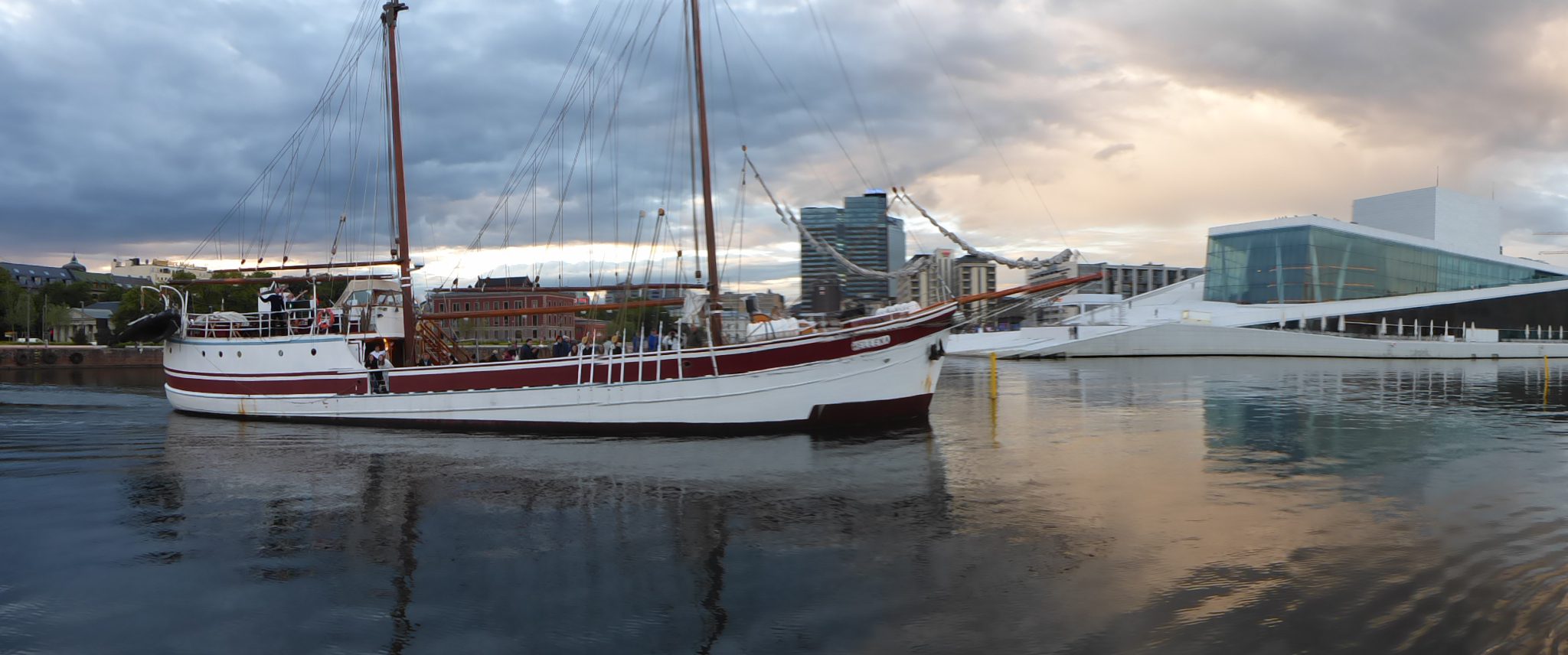
The SS Helena in Oslo Port / Photo by VisitOSLO/Sabine Zoller
Discovering Oslo’s many museums
My fjord tour runs on a loop, and with rain looming, I hop off at Bygdøy Peninsula, otherwise known as Museum Island. There are several museums here that offer a glimpse into Norway’s history, including the Norwegian Museum of Cultural History, the Holocaust Center, the Fram Museum, the Kon-Tiki Museum, and the Norwegian Maritime Museum. The Viking Ship Museum, which includes three of the best-preserved Viking ships in the world and other artifacts, is closed for renovation until 2027. And since it’s Monday, the Maritime Museum is closed too. The ship will return in two hours, but I decide to spend the whole day exploring and take a local bus back into the city.
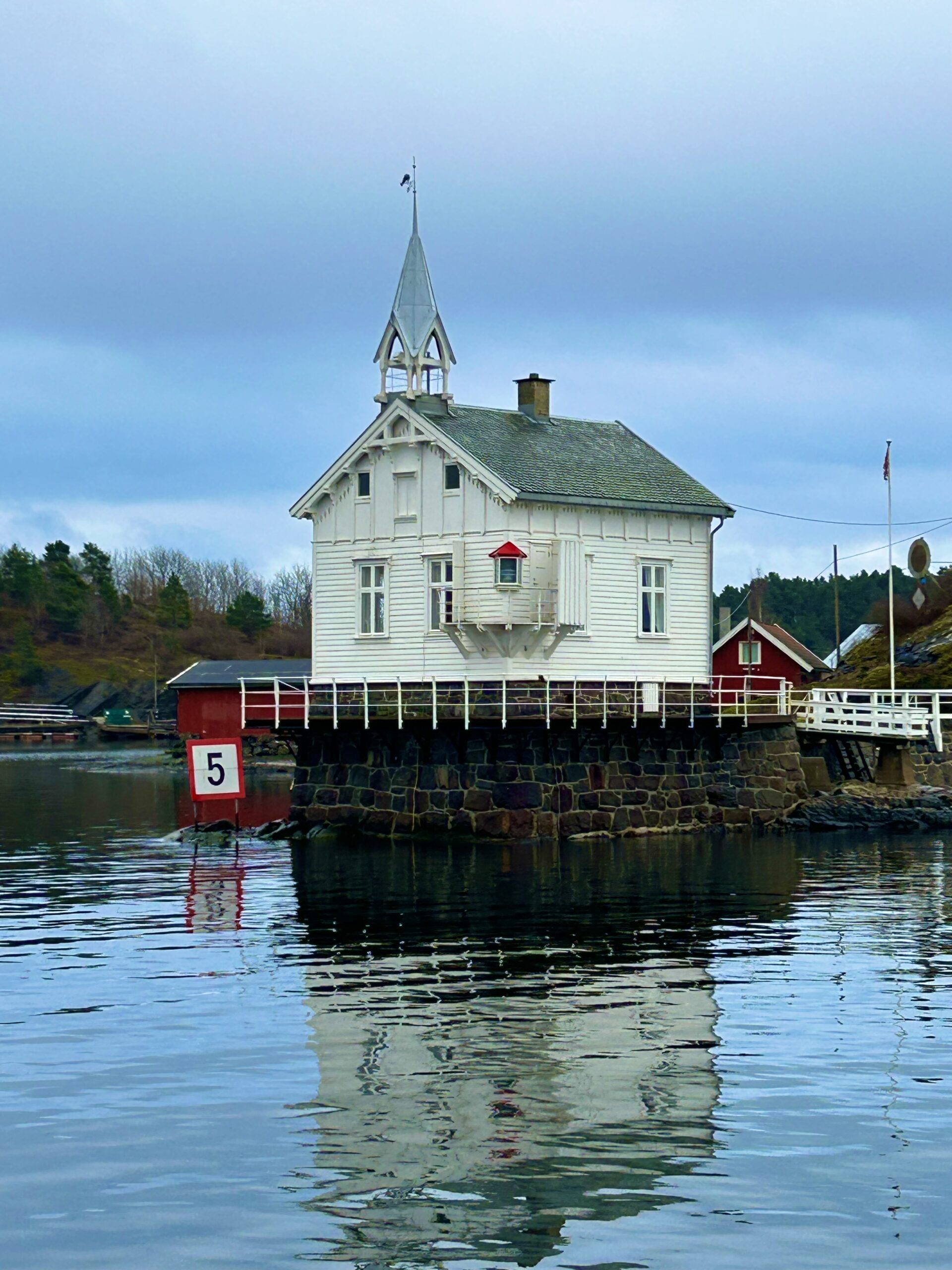
Small cabins on the fjord in Oslo / Photo by Carolyn Ray
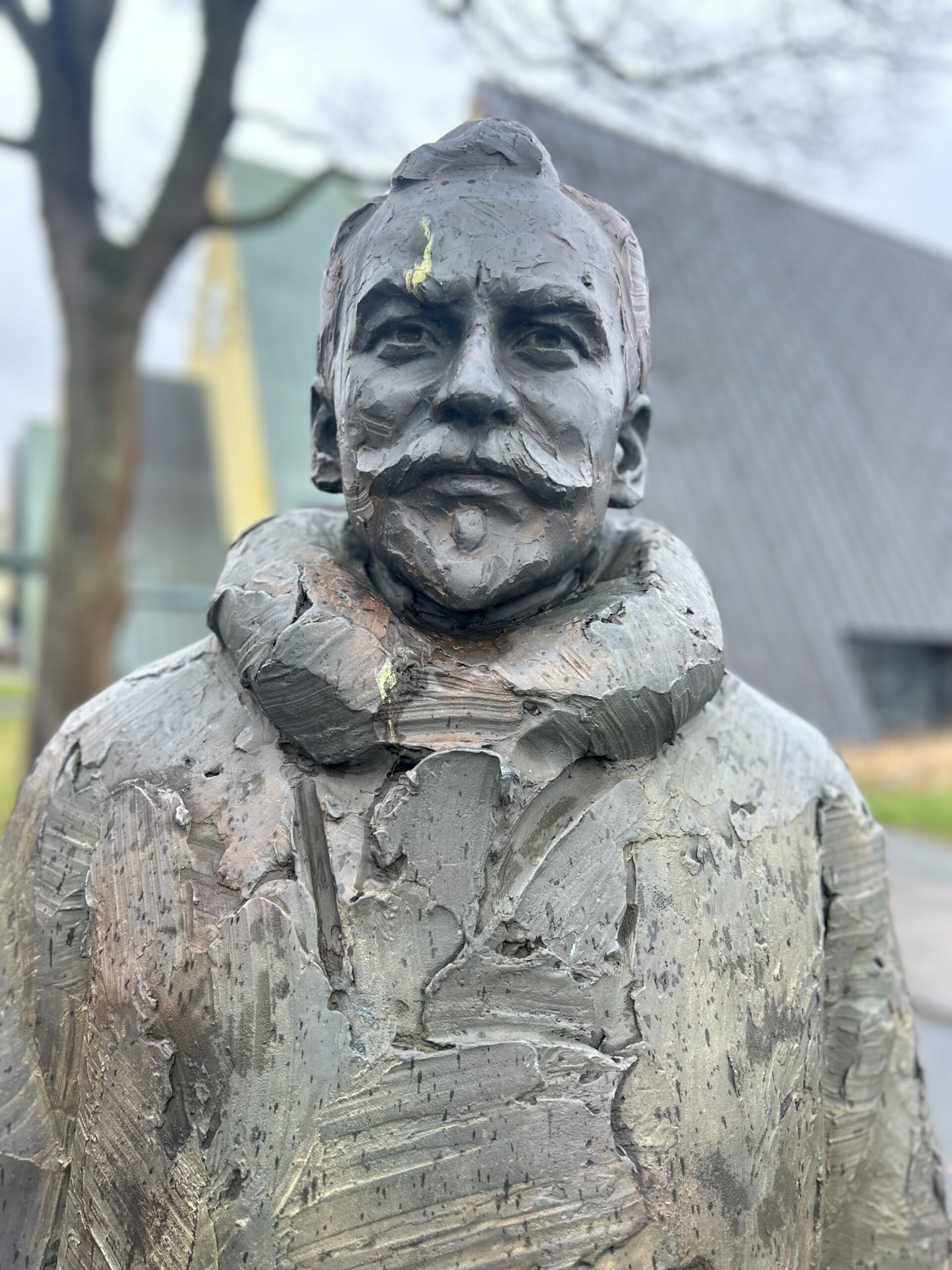
The memorial sculpture outside the Maritime Museum, with five sailors looking out to sea – so lifelike I expected them to blink / Photo by Carolyn Ray
Oslo has museums for every interest
The Fram: The only ship that sailed to the North and South poles
I’m not expecting to see the Fram when I walk into Fram House but there it is. The Fram was the first ship specially built in Norway for polar research and the only ship to have sailed to both the North and South Poles.
Specially designed to withstand the pressure from the ice, the Fram was used on three important expeditions: with Fridtjof Nansen on a drift over the Arctic Ocean 1893-96, with Otto Sverdrup to the Arctic Archipelago west of Greenland – now the Nunavut region of Canada – 1898-1902, and with Roald Amundsen to Antarctica for his South Pole expedition 1910-12.
After her final trip, she arrived in Oslo in 1935. It took over two months to get the ship on land, with a small electric motor pulling her at a speed of 1 cm/minute. The museum was built around her and opened in 1936 with the King, Crown Prince and other dignitaries present, together with men from all three Fram expeditions: Sigurd Scott-Hansen from the 1st, Gunnar Isachsen and Adolf Lindstrøm from the 2nd (Lindstrøm also from the 3rd) and Oscar Wisting from the 3rd.
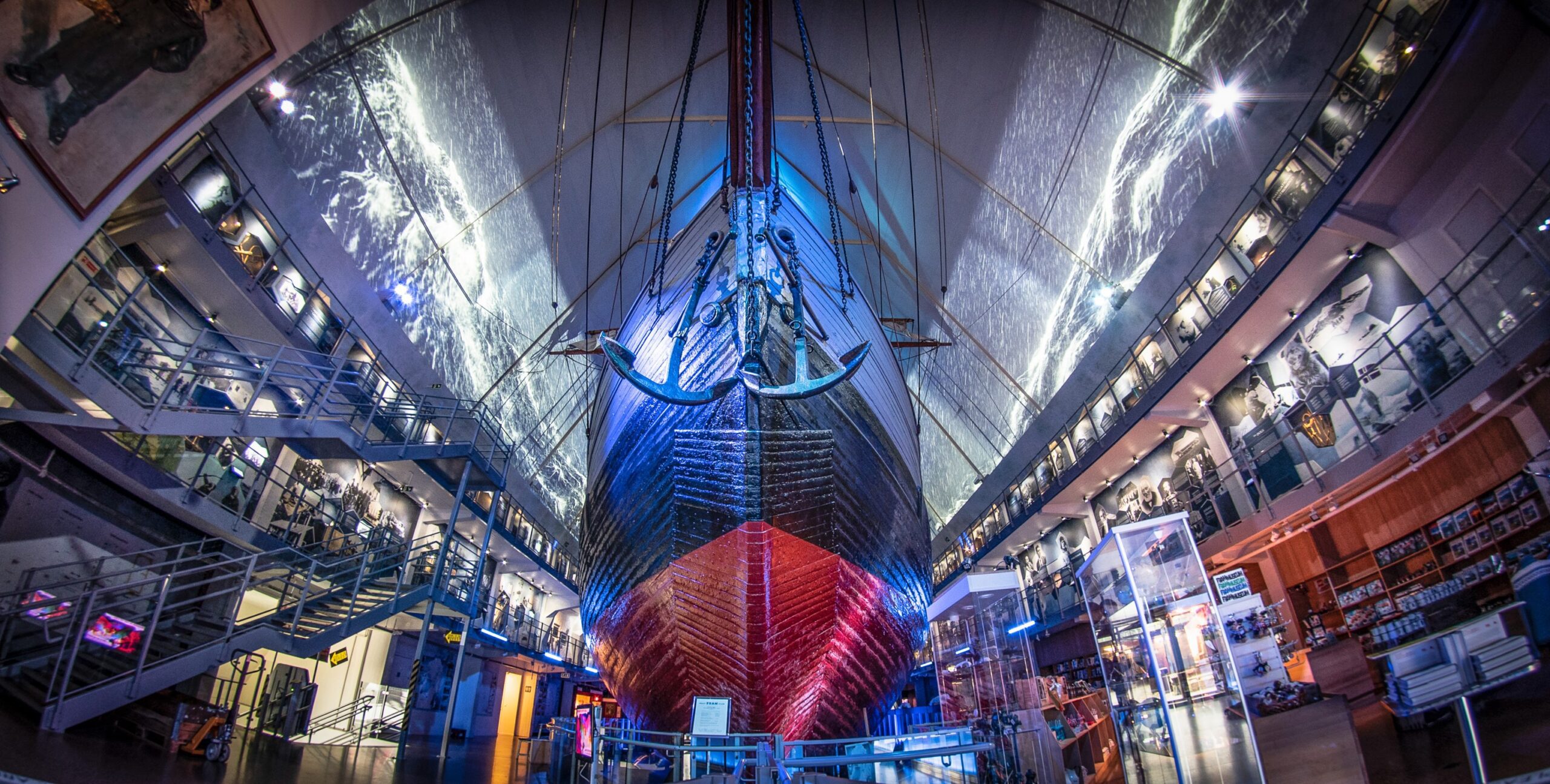
Oslo’s Fram Museum is simply extraordinary / Photo by Marcus Thomassen for Visit Norway
The Kon Tiki Museum – and the woman behind the expedition
Slightly more whimsical but no less daring, the Kon Tiki Museum tells the story of Norwegian ethnologist and adventurer Thor Heyerdahl. It includes the original balsa raft from the Kon-Tiki expedition and the reed boat Ra II. In 1947, Heyerdahl and his six-man crew sailed over 5,000 miles on a primitive hand-built raft from Callao, Peru, to the Tuamotu Islands in French Polynesia. His goal was to test his theory that the ancient South Americans could have reached Polynesia by drifting on ocean currents. The voyage made the six men world famous, resulting in a documentary and several movies as recently as 2012. However, despite all this publicity, there was with no mention of the woman who organized the expedition.
It is only in the past year that Norway’s Gerd Vold Hurum was recognized for her vital role in managing and planning the trip. She was central to the organization of the expedition and would have joined the trip had her boss not refused her request to go because she was a woman. It took 75 years for her to be acknowledged for her role.
Read More: 10 Museums Women Will Enjoy
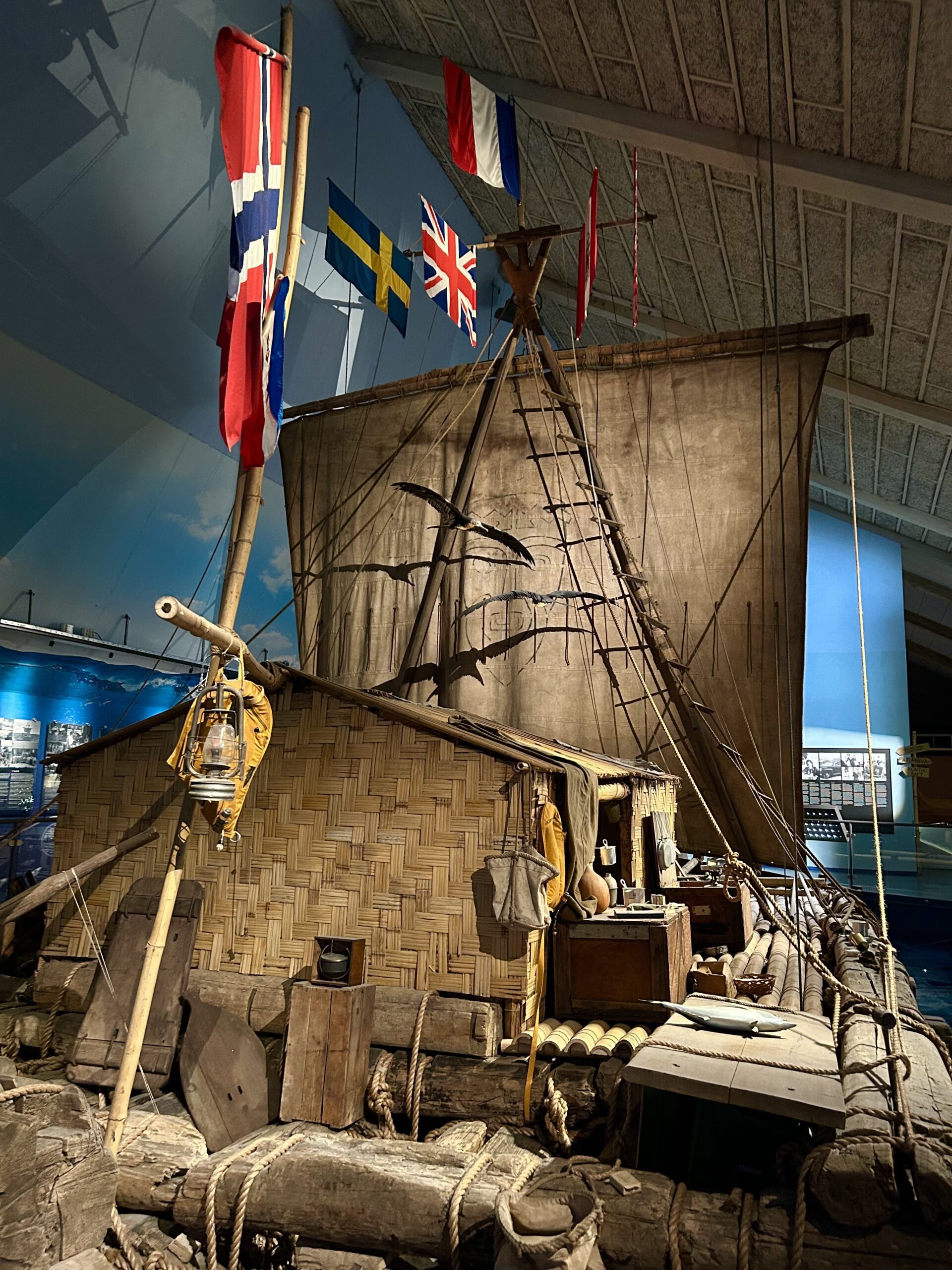
The Kon-Tiki raft / Photo by Carolyn Ray
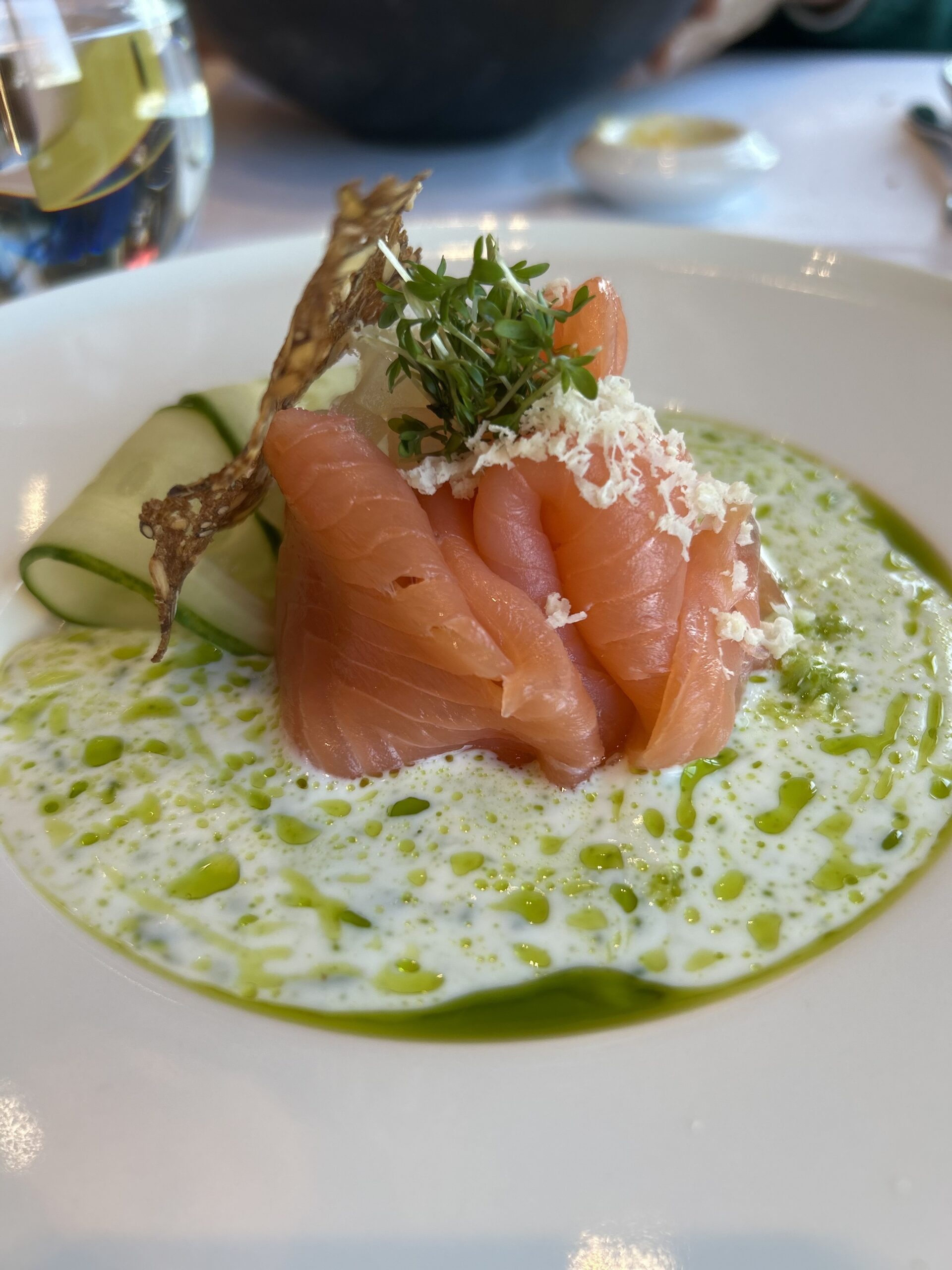
Mouthwatering cuisine is not hard to find in Oslo / Photo by Carolyn Ray
The Holocaust Museum in Villa Grande (Norwegian Center for Holocaust and Minority Studies)
The Norwegian Center for Holocaust and Minority Studies is situated in a large house known as Villa Grande, about a 5-minute walk from the bus route up a hill. It’s a sombre place, and the exhibition on the Holocaust shows the deportation of Jews and explores themes of racism, antisemitism and the history of Nazi ideology. It’s a dark chapter in Norway’s history that is carefully curated but shocking nonetheless to revisit.
In November 1942, 532 Jews were deported from the Port of Oslo in the winter on board the S/S Donau to the Auschwitz-Bikenau death camp. Only 34 out of the 772 Jews deported from Norway on the Donau, the Monte Rosa and the Gotenland survived. In addition to S/S Donau’s bell, there are displays on racism and a memory wall that visitors can contribute to. One can only hope that we learn from the past.
Ekebergeparken Sculpture Park: For the people of Oslo
Ekebergeparken Sculpture Park is a public sculpture and cultural heritage park, covering 63 acres of the hill surrounding Oslo to the east. Just up the hill from the MUNCH museum, it’s an easy ride on Tram 19. Established in the late 1800s, the area was created as a public park ‘for the people of Oslo’s spiritual and moral well-being’. With works by both Norwegian and international artists such as Renoir and Dali, the park offers hiking opportunities in a unique landscape with extraordinary views of Oslo and the Oslofjord.
All the paths are wheelchair accessible, and after strolling the grounds, with its charming white frame houses, I grab a cozy window seat at the upscale Ekeberg Restaurant, dig into a warm fish soup and enjoy the views of Oslo below.
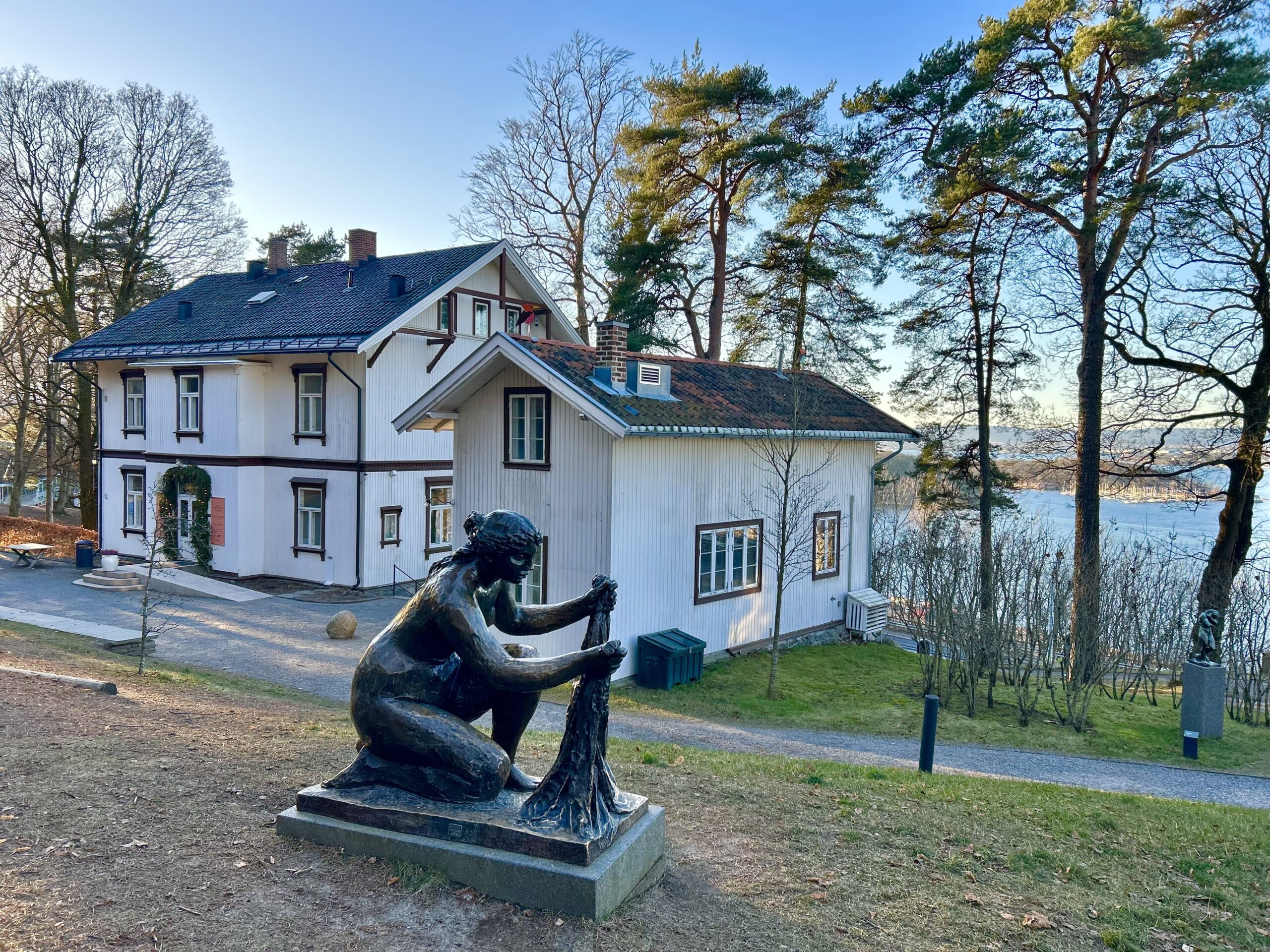
Renoir’s La Grande Laveuse sculpture in Ekebergeparken Sculpture Park depicts a woman washing clothes / Credit Carolyn Ray
Holmenkollen Ski Museum and Tower
It’s a scenic ride up the hill on the tram from downtown Oslo to the Holmenkollen Ski Museum and Tower. When I take the elevator to the top of the Holmenkollen Ski Jump, 425 feet above sea level, I’m almost blown off my feet. How on earth could anyone ski from this height? But many have. In 1974, Anita Wold became the first woman to jump in Holmenkollen when she performed the opening trial jump of that year’s ski festival.
The site, which is over 100 years old, has also hosted the 1952 Winter Olympics, world championships and Nordic cups. The world’s only steel ski jump, Holmenkollen has been rebuilt 19 times to what it is today, through a series of larger jumps Today, it’s one of Norway’s most popular tourist attractions, with over 1.2 million visitors a year.
Norway’s homage to skiing can be found in the Holmenkollen Ski Museum, which was established in 1923 and was relocated to Holmenkollen since 1951. It features Norway’s oldest ski, which dates to the Stone Age, approximately 5,200 years ago. Found in 1959, the ski’s wooden fragments have leather on the underside, showing that it was probably used for hunting as it would be silent in the snow.
Read More: Kayaking in Sweden in A Wheelchair
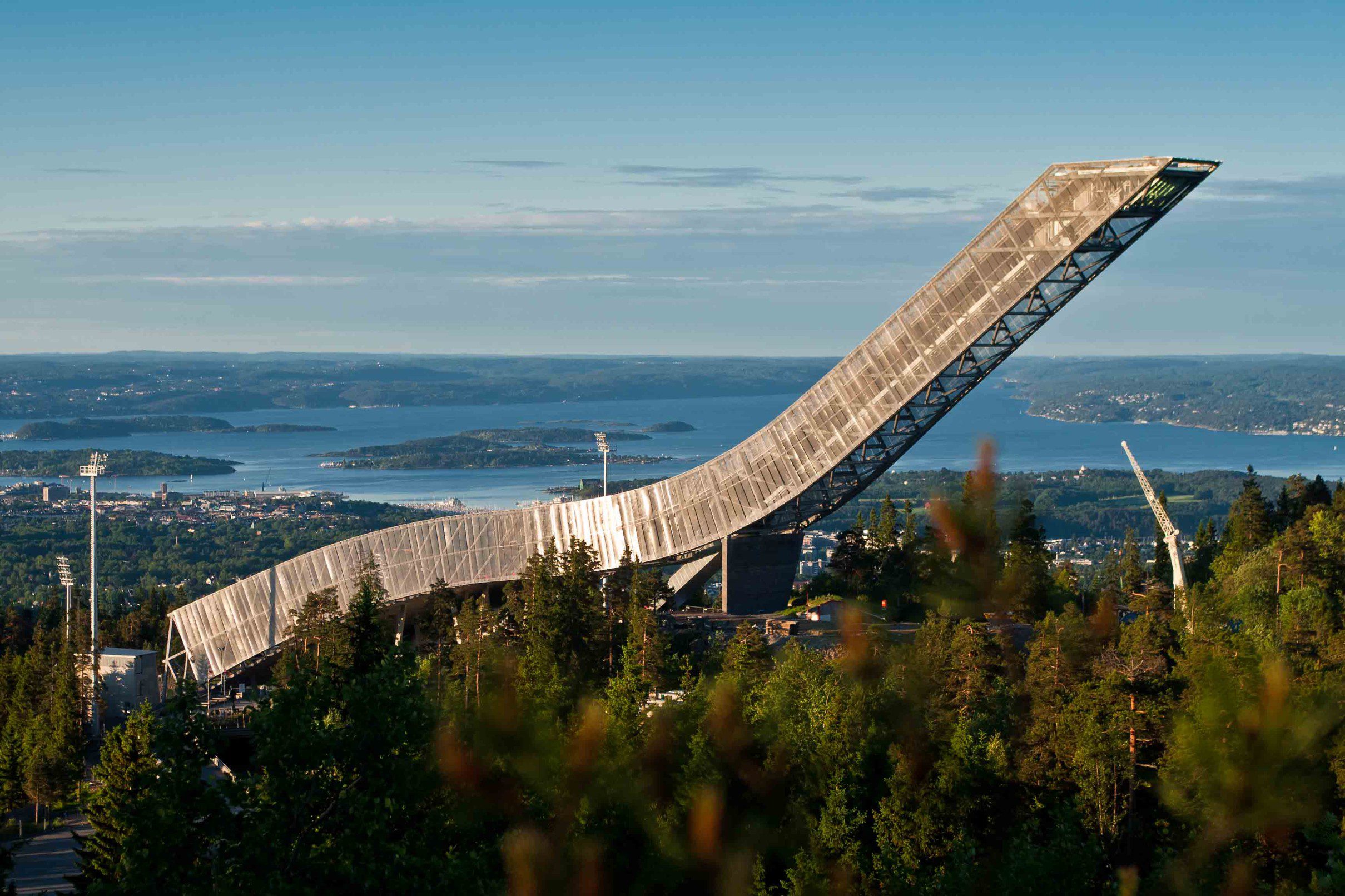
The incredible Holmenkollen Ski Jump / Photo by Visit Norway
MUNCH Museum: The Scream
It’s impossible to visit Oslo without going to the MUNCH Museum. Edvard Munch was born in Norway in 1863 and became one of its most celebrated painters. There are many print and painted versions of Edvard Munch’s most famous work, “The Scream” in the museum’s collection, which shows a figure on a straight road that leads off into infinity. It’s believed that the idea for “The Scream” came from one of Munch’s nightly walks through Oslo in 1891. In the poem, he wrote about his stroll, he described how he “suddenly stopped quaking and felt a vast infinite scream passing through nature”.
Munch created every version on cardboard or paper, which is more fragile than oil paintings. To preserve them, they are displayed at 30-minute intervals to reduce exposure to the light. While you’re there, visit Kranen bar on the 12th floor, which offers a fantastic sunset view and a look at Bjørvika, the new neighbourhood being built along the harbour.
When visiting Oslo in the winter, an essential stop is Oslo’s Christmas Market, which is in full swing right outside my hotel, the Karl Johan. The market is close to the Royal Palace and the main train station. With such warm temperatures, the ice-skating rink is flooded, but there’s plenty to explore at the food stalls — cheese, sausages, crepes and of course, hot mulled wine. The perfect way to end an adventurer’s day, don’t you think?
Where to eat in Oslo in the winter
Oslo has an array of charming places to eat, including 34 Michelin-star restaurants. For a local main menu, make a reservation in advance at Vaaghauls, near the MUNCH Museum. The fixed menu features eclectic and delicious foods from land and sea, and wine pairings. Olivia’s is a chain that offers fast Italian food if you just need something quick and filling. For rooftop views, try the Top at the Radisson Hotel.
Where to stay in Oslo
Karl Johan Hotel: Just a 10-minute walk from the Oslo Central train station, its central location makes it easy to walk or use public transit. Rates include a sumptuous breakfast. I loved the personalized card and chocolate heart that welcomed me into my room. Check rates here.
Amerikalinjen Hotel: This historic building was once the head office of the Den Norske Amerikalinje (Norwegian American Line). Founded in 1910, the Den Norske Amerikalinje operated as both a cruise line and a freight company that transported mail, cargo, and people from Norway to America. The rooms are luxurious, comfortable and large. Find a room here.
How to Get to Oslo
With the Oslo City pass, it’s easy to take public transit in the city (including all metro, trams, buses and ferries in zones 1 and 2, as well as the electric ferries to the islands in the Oslo Fjord. The Oslo City Pass provides free admission to 30 museums, including The MUNCH Museum, The National Museum, the Astrup Fearnley Museet, and the Ibsen Museum. The pass is available for 24, 48 or 72 hours and has a senior rate of 440 NOK (approximately USD$40) for a 24-hour pass. Read more about the Oslo Pass.
From Toronto, Air Canada offers flights with a stopover in Frankfurt. From the Oslo Airport, take the Flytoget Airport Express for $21 to Sentrale Station. This may be the most beautifully designed airport train I’ve ever seen. You can purchase tickets on your phone. Click here to find flights.
From Oslo to Bergen, you can take the Oslo-Bergen train, which includes a stop at Finse (the highest point). See Hotel Finse1222 here.

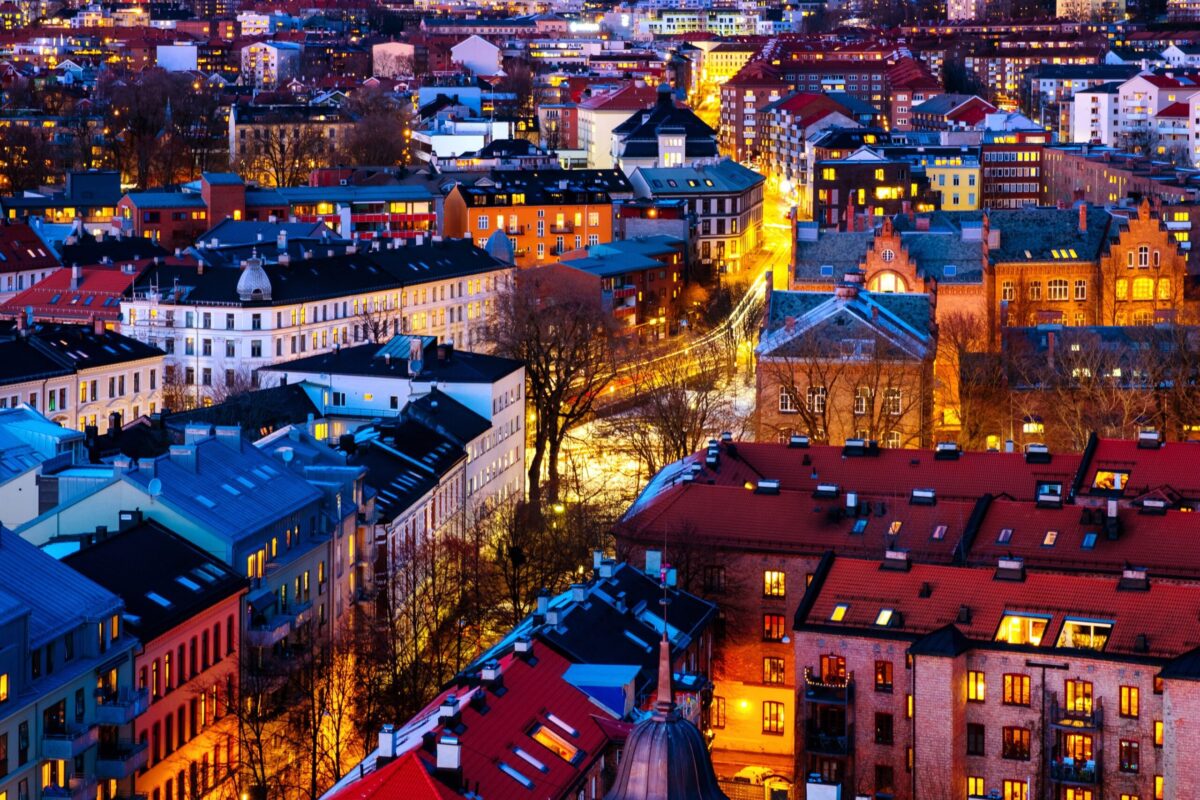



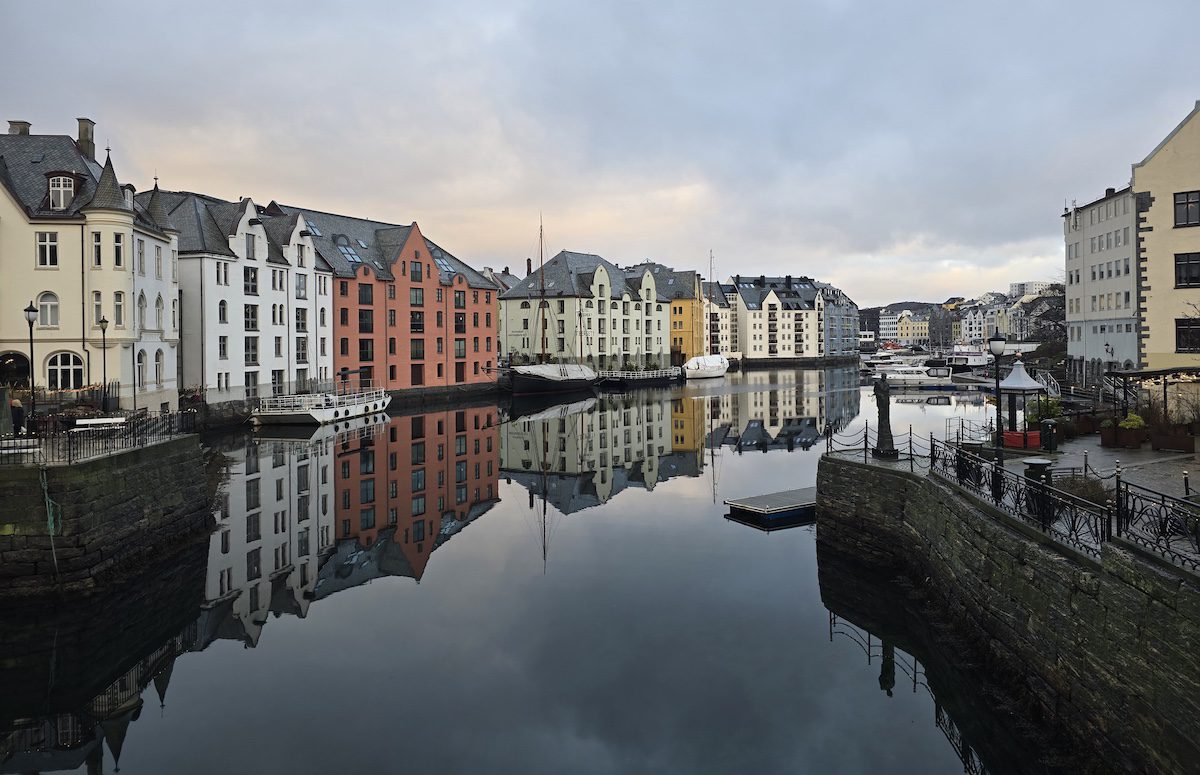
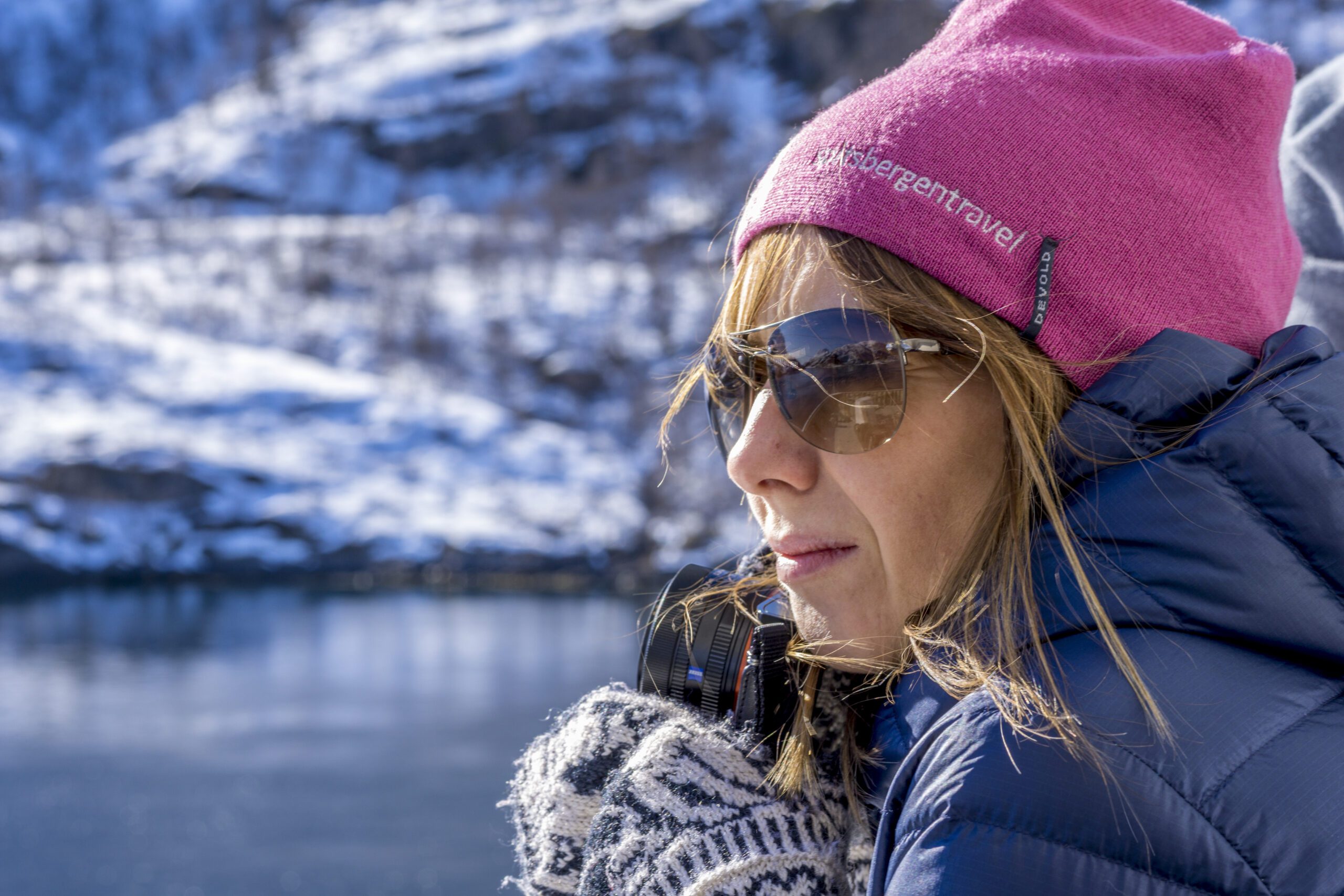
0 Comments
We always strive to use real photos from our own adventures, provided by the guest writer or from our personal travels. However, in some cases, due to photo quality, we must use stock photography. If you have any questions about the photography please let us know.
Disclaimer: We are so happy that you are checking out this page right now! We only recommend things that are suggested by our community, or through our own experience, that we believe will be helpful and practical for you. Some of our pages contain links, which means we’re part of an affiliate program for the product being mentioned. Should you decide to purchase a product using a link from on our site, JourneyWoman may earn a small commission from the retailer, which helps us maintain our beautiful website. JourneyWoman is an Amazon Associate and earns from qualifying purchases. Thank you!
We want to hear what you think about this article, and we welcome any updates or changes to improve it. You can comment below, or send an email to us at [email protected].